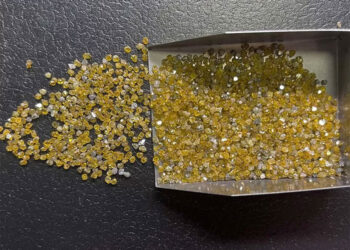Our Services
Contact info
We are always ready to help you. There are many ways to contact us. You may drop us a line, give us a call or send an email, choose what suits you most.
Need help?
15 W 47th St Suite #200 Second Floor, New York, 10036,United States
Tel: +1 917 302 9305
[email protected]
Jewelry With Lab Grown Diamonds
Jewelry with lab grown diamonds is becoming increasingly popular among consumers. This new type of stone is less harmful to the environment and is cut and polished to maximize brilliance and sparkle. A recent survey by Plumb Club Industry and Market Insights 2021 revealed that 79% of respondents had heard about the concept of lab grown diamonds but only 41% knew what the distinction was between these synthetic diamonds and natural gems.
While some consumers are wary about buying diamond jewelry containing lab-grown diamonds, more consumers are becoming aware of the advantages of lab-grown diamonds. In addition, the growing awareness of ethical diamond sourcing has paved the way for more lab-grown diamonds in jewelry. A recent survey of 1,000 jewelry consumers showed that over 70% of respondents would be willing to pay more for a diamond made from responsibly sourced materials. Consequently, several companies have taken steps to raise awareness about lab-grown diamonds and increase the acceptance of these stones.
They are less harmful to the environment
The process of growing diamonds in labs is much less harmful to the environment than mining them. Compared to mined diamonds, lab grown diamonds use significantly less water. In addition, they release less carbon than mined diamonds. This makes them a more sustainable choice for engagement rings. conditions of diamond miners, and have provided millions of dollars in aid to communities in West Africa ravaged by the diamond trade. A UN Environment panel member recently addressed the environmental impact of lab-grown diamonds.
-
1
In addition to being more environmentally friendly, lab grown diamonds are cheaper. They can cost up to 40 to 50 percent less than mined diamonds. Moreover, the larger the stone, the lower its cost. This makes lab grown diamonds attractive to price conscious buyers. The only disadvantage to these diamonds is that they cannot be resold as easily as mined diamonds.
-
2
In fact, many consumers would prefer buying lab grown diamonds over mined ones. This is due to the lack of environmental damage and high quality. Moreover, lab grown diamonds are also more affordable than mined diamonds. Moreover, millennials would prefer buying diamond jewelry made from these stones, as they do not have to worry about the environment.
-
3
Another benefit of lab grown diamonds is that they produce significantly less carbon. Natural diamonds release a lot of carbon and water during their production, making them less environmentally friendly than lab grown diamonds. That is a major factor in the increased popularity of lab grown diamonds. The benefits of lab grown diamonds can only be realized when the technology is widely available.
-
4
The production of mined diamonds contributes to global warming. The mining process damages the environment by releasing over 125 pounds of carbon per carat. In addition, it causes the emission of 30 pounds of Sulphur oxide. In contrast, lab grown diamonds release zero Sulphur oxide. In addition, mining of diamonds requires a large area of land and creates five hundred pounds of mineral waste.
They are less expensive than natural diamonds
-
1
One of the reasons that lab grown diamonds are cheaper than natural diamonds is that they are created in a controlled environment. Natural diamonds are formed deep inside the earth and travel to the surface under enormous pressure and heat. They have to travel about 100 miles in a column of molten rock. That's three times the depth of an average volcano!
-
2
The supply of natural diamonds is limited and thus, they are more expensive than lab grown diamonds. On the other hand, the supply of synthetic diamonds is unlimited. This has resulted in significantly lower prices for lab grown diamonds. Today, a lab grown diamond of comparable quality costs about half as much as a natural diamond.
-
3
Another factor in making lab grown diamonds less expensive is consumer education. Because consumers have become more educated about the benefits of lab grown diamonds, more jewelry retailers are stocking them. This is an important development for the industry as a whole. Because they are less expensive than natural diamonds, consumers are now becoming more accepting of lab grown diamonds.
-
4
The price of a lab grown diamond varies over time, but a one-carat lab-grown diamond costs roughly 50 percent to seventy percent less. Depending on the cut, clarity, and color, the average lab-grown diamond costs between $2,500 and $18,000, which makes them more affordable than their natural counterparts.
-
5
Another benefit of lab-grown diamonds is that they are more environmentally friendly. Because they are created in a controlled environment, they do not produce dangerous or non-sustainable energy. They also do not disrupt the earth like natural diamonds do. Since they're not mined, there's no need to worry about the environment or human rights.
Related Projects

lab grown diamonds
Nanometer Modified Diamond Powder

lab grown diamonds
CVD SC Diamond Optical Window

lab grown diamonds
HPHT Monocrystalline Diamonds




